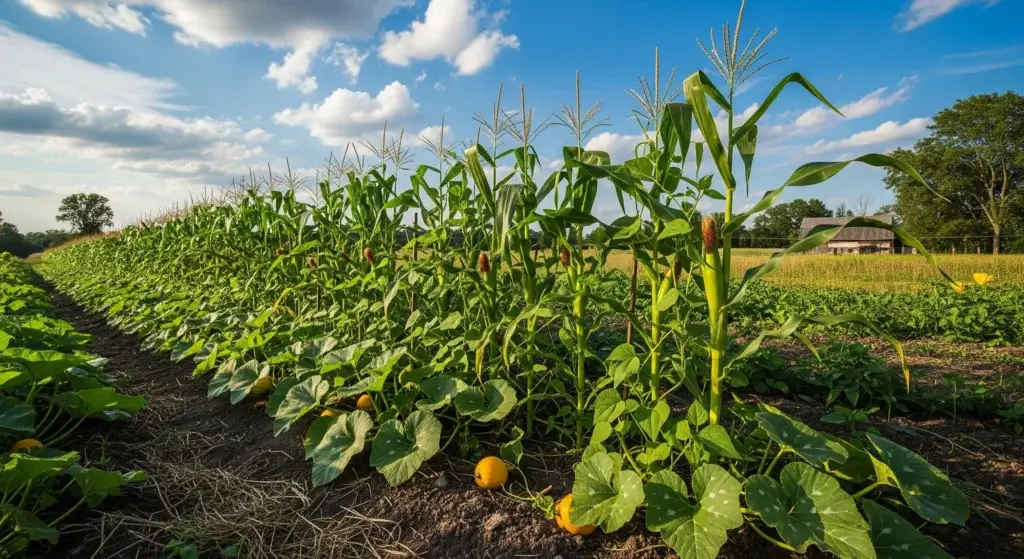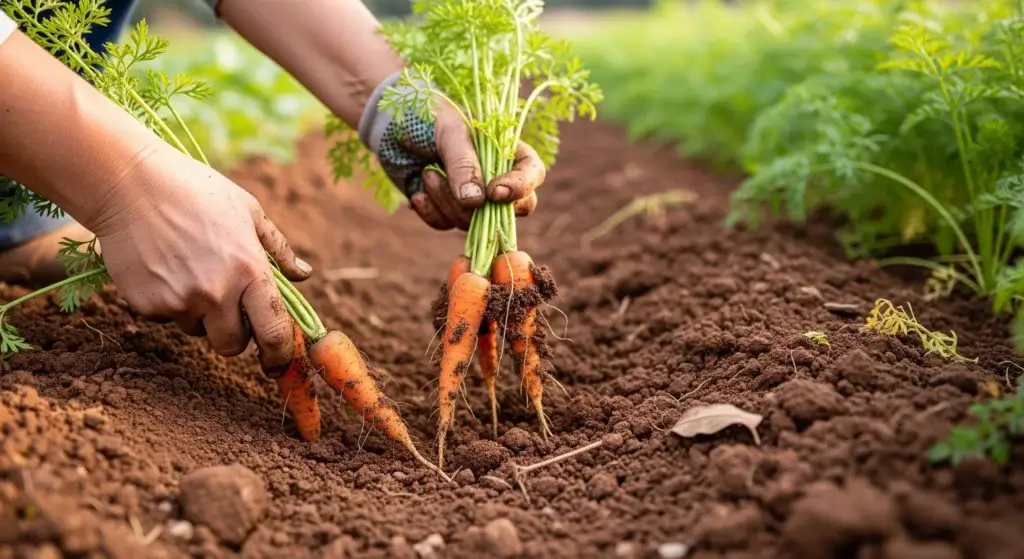
Lemon balm, with its delightful lemony scent and versatile uses, is a wonderful addition to any herb garden.
Whether you’re a seasoned gardener or just starting out, growing lemon balm is a rewarding and straightforward experience.
In this comprehensive guide, we’ll walk you through the essential materials needed, how to grow lemon balm from seeds, transplants, and cuttings, care and maintenance, common pests and diseases, and more.
Let’s dive in!
Essential Materials Needed
Before you start growing lemon balm, it’s essential to gather the necessary materials. You’ll need:
- Lemon balm seeds, transplants, or cuttings
- Well-draining soil
- A sunny or partially shaded location
- Watering can or hose
- Organic fertilizer
- Mulch
- Pruning shears
Now that you have your materials ready, let’s explore the various methods of growing lemon balm.

How to Grow Lemon Balm
Cultivating lemon balm, a versatile and aromatic herb, can be a rewarding venture for your herb garden.
Whether you choose to start from seeds, transplants, or cuttings, here are detailed steps to guide you through each method:
- Read also: A Guide to Growing Dipladenia Plants
- Read also: A Comprehensive Guide to Growing Cordyline Red Sister Plants
Seeds method
- Sowing time: Kickstart the process in the late winter to late spring when conditions are conducive for germination.
- Pot or tray preparation: Choose a container, fill it with peat-free seed compost, and ensure it is adequately watered.
- Sowing the seeds: Delicately place lemon balm seeds on the surface, lightly covering them with compost or vermiculite. Be meticulous with watering.
- Maintaining moisture: Keep the soil consistently moist until germination, which typically occurs within 3 weeks.
- After germination: Once the seedlings emerge, carefully relocate them to a well-lit area for sustained growth.
Benefits of the seeds method
Starting from seeds is cost-effective and allows for a larger quantity of plants to be cultivated simultaneously.
Transplants method
- Planting distance: Set lemon balm plants 20 to 24 inches apart in a location with partial shade, ensuring the soil is nutrient-rich and well-drained.
- Watering and feeding: Regularly water the plants and supplement them with water-soluble plant food to maximize leaf production.
- Harvesting: When the plants reach a height of 6 to 8 inches, harvest the leaves, being cautious not to collect more than one-third of the plant at a time.
Benefits of the transplant method
Starting with established plants provides a head start, allowing for quicker access to harvesting and utilization.
Cuttings method
- Selecting a cutting: Opt for a healthy lemon balm plant and take a 3 to 4-inch cutting.
- Preparing the cutting: Remove the lower leaves and place the cutting in a glass of water.
- Root development: Once roots reach 2 to 3 inches in length, transplant the cutting into well-draining soil, ensuring thorough watering.
Benefits of the cuttings method
Propagating through cuttings preserves the characteristics of the parent plant and accelerates the growth process.

Care and Maintenance
Lemon balm is a low-maintenance herb, but it does require some care to thrive. Here are a few essential tips:
Regular watering
Lemon balm appreciates consistent moisture, especially during dry spells.
Aim to water the plant regularly, ensuring the soil remains evenly moist but not waterlogged.
Check the soil moisture regularly by inserting your finger into the soil; if it feels dry to the touch, it’s time to water.
Fertilization
Promote healthy growth by fertilizing the soil with organic fertilizer.
Choose a balanced fertilizer suitable for herbs and apply it according to the manufacturer’s instructions.
Fertilizing in the early spring as new growth emerges and again in midsummer can provide the necessary nutrients for robust growth.
Mulching
Apply a layer of mulch around the base of the lemon balm plant to help retain moisture in the soil and suppress weed growth.
Organic materials such as compost, shredded leaves, or straw make excellent mulch options.
Ensure the mulch is spread evenly and does not come into direct contact with the plant’s stems to prevent rotting.
Regular pruning
Keep your lemon balm plant tidy and encourage new growth by pruning it regularly.
Remove any dead or yellowing leaves, as well as any overly leggy stems.
Pruning also helps to maintain the plant’s shape and prevent it from becoming excessively bushy.
Aim to prune the plant throughout the growing season, but avoid heavy pruning during periods of hot weather or drought.
What Are The Benefits of Growing Lemon Balm?

The benefits of growing lemon balm are numerous and diverse, making it a valuable addition to any garden.
Here are some of the key benefits supported by various sources:
Calming and medicinal properties
Lemon balm is known for its calming and medicinal properties.
It can help alleviate stress, anxiety, and tension headaches. Studies have shown that lemon balm extract can improve mood and attention, making it a potential treatment for anxiety and other related issues.
Antiviral and antibacterial effects
Lemon balm possesses antiviral and antibacterial effects, making it a valuable herb for promoting overall health.
It has been used to treat cold sores, venomous insect bites, and stings.
Additionally, lemon balm oil has been found to have a high degree of antibacterial activity, showing adequate activity against certain bacteria.
Cognitive function and sleep support
Some studies have found that lemon balm may help improve cognitive function and decrease restlessness, making it a potential aid for easing sleep disorder insomnia.
It can also reduce agitation and promote relaxation, contributing to a good night’s sleep.
Natural pest deterrent
Lemon balm is an excellent natural pest deterrent. Its fragrant leaves repel mosquitoes and other bugs, making it a valuable addition to outdoor spaces.
When lemon balm flowers, it attracts bees, butterflies, and other beneficial pollinators, contributing to a healthy and vibrant garden ecosystem.
Easy to grow and versatile
Lemon balm is one of the easiest herbs to grow, making it suitable for both experienced and novice gardeners.
It is a low-maintenance perennial herb with lemon-scented leaves that can be used in a variety of culinary applications, such as salads, sauces, fish dishes, and herb teas.
It is also great to use in potpourri, adding a delightful lemony touch to various creations.
Common Pests and Diseases

there are a few issues to be mindful of. Here’s a summary of the common pests and diseases associated with lemon balm:
Pests
Aphids
These are greenish, red, black, or peach-colored sucking insects that can spread disease as they feed on the undersides of leaves.
They are difficult to control without chemicals.
Hot pepper wax or insecticidal soap can be used, and it’s advisable to check with the Cooperative Extension Service for pesticide recommendations.
Diseases
Powdery mildew
This fungal disease gives leaves a whitish powdery appearance and can be a problem in areas with hot, humid days and cool nights.
It can be controlled by providing good air circulation and regular harvesting/pruning.
The cultivar M. officinalis ‘Citronella’ is mildew-resistant.
Septoria leaf spot
This fungal disease causes dark brown or black 1-2mm angular leaf spots.
It can be combated with proper air circulation and by avoiding wet leaves, warm temperatures, and high humidity.
Mint rust
This disease appears as brown-red spots on the leaves and is caused by a rust fungus.
Heavy pruning often helps against this disease, which can occur due to excessively nutrient-rich soil.
- Read also: A Guide to Growing Croton Mammy
- Read also: A Guide on How To Grow Cypress Trees
Conclusion
Cultivating lemon balm is an enchanting and gratifying endeavor, promising a delightful addition to your garden.
Whether you opt for seeds, transplants, or cuttings, this versatile herb is certain to flourish under your care.
With the right attention and maintenance, the invigorating scent and flavorful essence of lemon balm will soon become a delightful presence in your garden, ready to enhance various culinary and wellness experiences.
FAQs
Lemon balm can be harvested as soon as the leaves appear in spring and throughout the growing season. It’s best to harvest the leaves in the morning when the essential oils are at their peak.
Yes, lemon balm can be grown indoors in a sunny location. It’s best to place the plant near a south-facing window to ensure it receives adequate sunlight.



